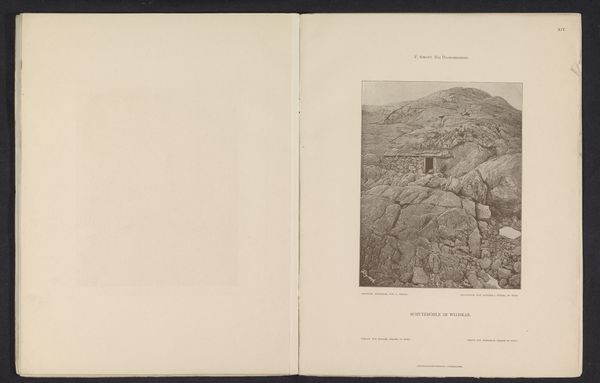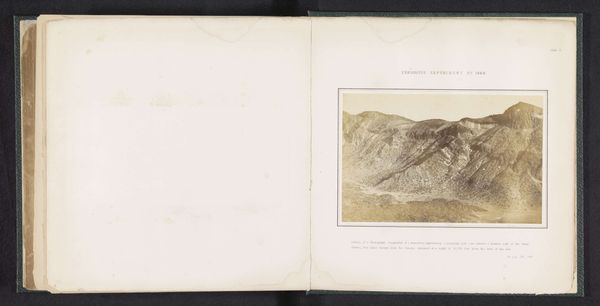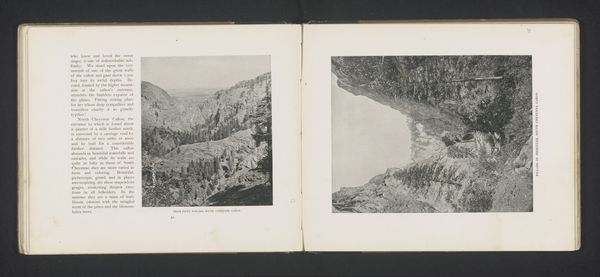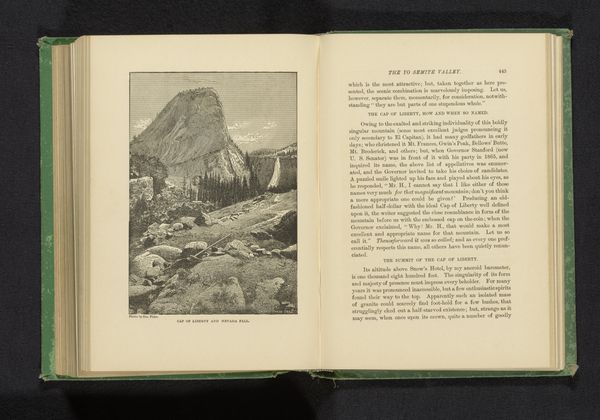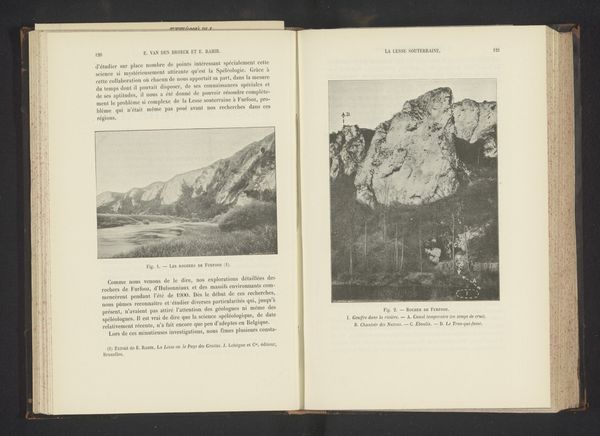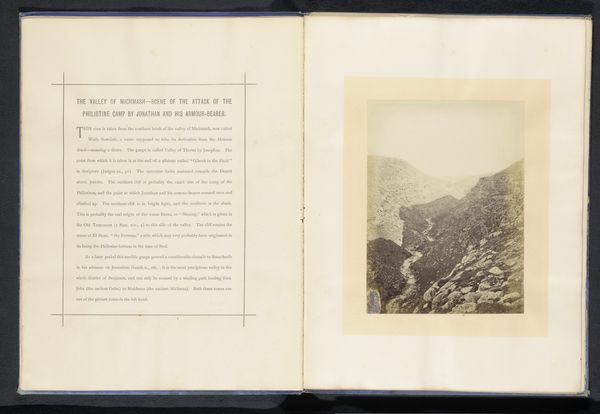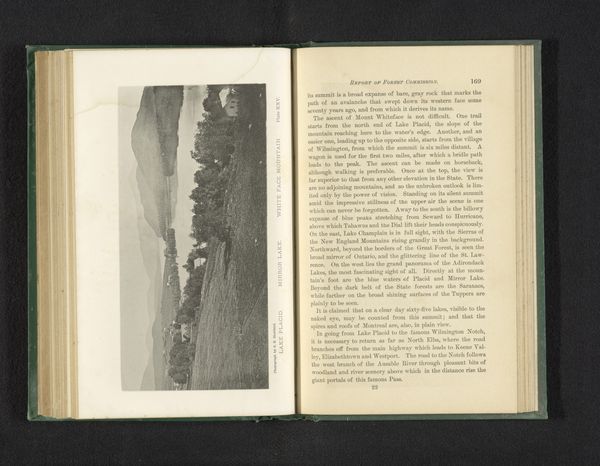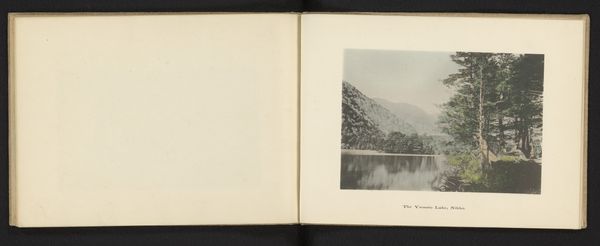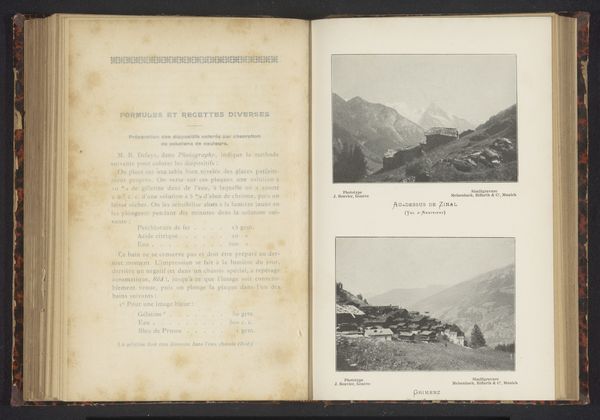
Dimensions: height 155 mm, width 99 mm
Copyright: Rijks Museum: Open Domain
Curator: I’m immediately drawn to the delicate, almost fragile line work on the right-hand print. It depicts a man atop what I believe is Half Dome, but the overall feeling is quite vulnerable, exposed against that vast landscape. Editor: Precisely, and that stark vulnerability plays with how notions of labor intersect with environmental subjugation during westward expansion in the late nineteenth century. This artwork, "Man op een top van de Half Dome in Yosemite Valley, Californië" by S.C. Walker predates 1886. It's presented in an open book, featuring both a photographic print and a drawing. Curator: The duality is fascinating—the photographic realism on one page versus the illustrative rendering on the other. The contrast invites a reading on the labor involved in the *making* of each image, as the drawing brings more to attention how that scene of Half Dome came into being as a social production, a commodity. Editor: Agreed. Think about the labour, physically. Conquering that natural landscape but with materials at hand. Walker, in essence, commodifies this sublime vista, packaging it for consumption as a print, transforming an imposing landscape into a domestic object and inviting reflection of how labor is inextricably bound with capitalist and colonialist projects, reflecting power structures of the day. Curator: Absolutely. It’s tempting to read this through a gendered lens as well. Who is that tiny figure? He's rendered as solitary and, from a theoretical viewpoint, we might consider the ways in which his very construction and identity were inevitably caught in notions of labor, manifest destiny, and ideas of wilderness and control during the period in question. Editor: Indeed, the prints are suggestive of this intersection, of masculinity but also craft, of how they work together to form ideologies. Seeing that mountain being conquered as an artifact is telling and gives context into the social norms and ideals present at the time, in contrast to our view. Curator: It's quite powerful to reflect how historical circumstances shaped not only the landscape itself but also its representation through visual media. These are, even within their aesthetic simplicity, tools for critical analysis and open discourse. Editor: Looking at both illustrations of the rock formation, the drawing perhaps most pointedly represents what resources at hand helped commodify nature into artistic renditions, making us consider our place today in artistic expression and the current access we all possess with tools.
Comments
No comments
Be the first to comment and join the conversation on the ultimate creative platform.
